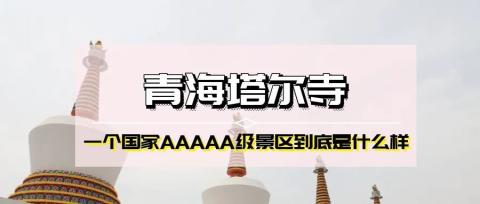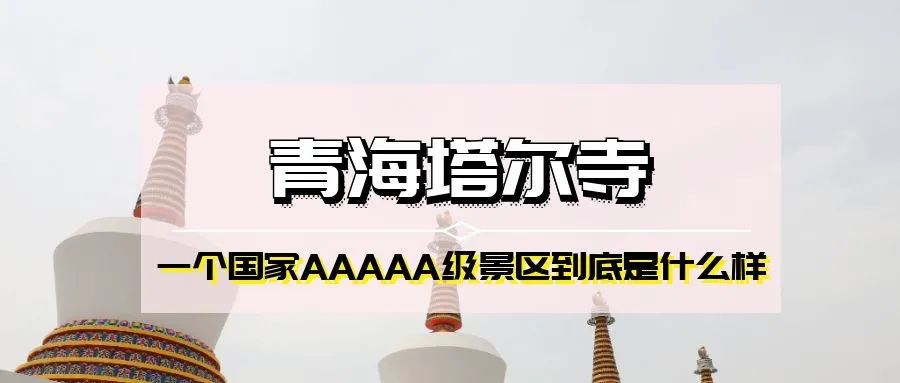

Kumbum Monastery is located in Huangzhong District, Xining City, about 30 kilometers away from Xining City.

Kumbum Monastery is a famous lamasery in my country. It is the birthplace of Tsongkhapa, the founder of the Yellow Sect of Lamaism, and the center of Buddhist activities in the northwest region.

Kumbum Monastery has a history of more than 400 years. The Kumbum Temple is undulating along the mountain. It consists of the Dajinwa Temple, the Xiaojinwa Temple, the Great Sutra Hall, the Great Kitchen, the Nine Halls, Dalalang, the Ruyi Pagoda, the Taiping Pagoda, the Bodhi Pagoda, the Guomen Pagoda, and many other palaces, sutras, etc. It is a majestic ancient building complex that combines Tibetan and Chinese artistic styles.




The temple halls are connected and there are many white pagodas. The whole temple is not only unique and creative in shape, but also the detailed decoration has reached a high artistic level. The butter flowers, murals and embroidery in the temple are known as the "Three Wonders of Kumbum Temple" and have unique national style and high artistic value.



Eight Treasures Ruyi Pagoda, There are 8 towers arranged side by side, built in the 41st year of Emperor Qianlong's reign in the Qing Dynasty (1776). The pointed roof, round on top and square on the bottom, commemorates eight major events of Sakyamuni:
1. Lotus Ju Pagoda is called Babang in Tibetan. To commemorate the fact that when Sakyamuni was born, he walked 7 steps, which means lotus flowers appeared at each step;
2. The Four Truths Pagoda is called Tashi Guomang in Tibetan. To commemorate the first reincarnation of Sakyamuni and preach the essence of the Four Noble Truths;
3. The Peace Pagoda is called Yandun in Tibetan. To commemorate Sakyamuni’s efforts to quell the dispute among the monks;
4. Bodhi Pagoda is called Xiangqu in Tibetan. To commemorate Sakyamuni’s enlightenment;
5. Shenbian Pagoda is called Poverty in Tibetan. To commemorate the miracles of Sakyamuni’s subjugation of heretic monsters;
6. Jiangfan Pagoda is called Labo in Tibetan. To commemorate the return of Sakyamuni to the world to save all sentient beings;
7. Victory Tower, called Nanjie in Tibetan. To commemorate Sakyamuni’s victory over the demon army;
8. Nirvana Pagoda, called Niangde in Tibetan. To commemorate the death of Gautama Buddha.

The Babao Ruyi Pagoda is located at the entrance of Kumbum Monastery. It is very conspicuous. Most visitors will take pictures here.

Tour map inside the temple, there are many things to see

Go to work

Another big picture

pose for a group photo

Prayer flags fluttering in the wind in the distance

The flowers are blooming in the temple. In this early spring, there are not many people in Kumbum Monastery. There was no admission fee when we came, but the monks were still busy. Friends who like Buddhism must come here!


May to September every year is the best tourist season for Kumbum Monastery. Friends who like it can also take a look at Qinghai Lake. Another point that needs to be explained is that aerial photography of Kumbum Monastery is not allowed!
